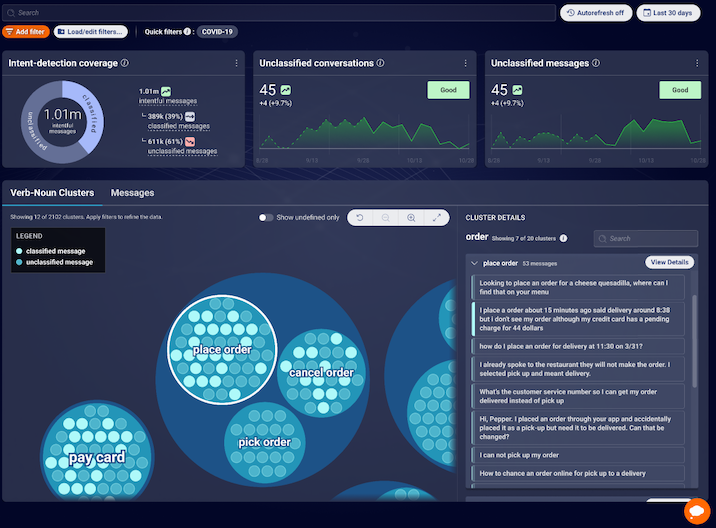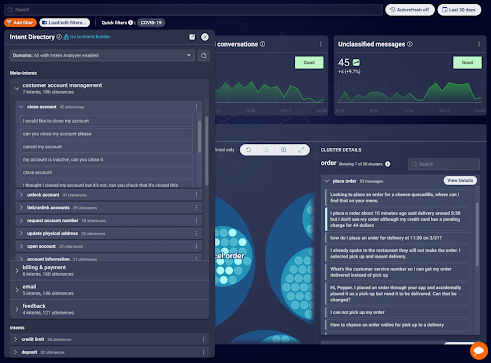Optimizing the coverage and quality of intents is a critical component of Intent Management. Intent Manager includes language clustering visualizations to help you discover new topics and trends in your conversational data.
What are clusters?
Clusters are groupings of messages that share similarities in language. Messages in each cluster share a noun (such as the word “order”), and each cluster contains sub-clusters that have noun-verb combinations such as “place order” or cancel order”. Both clusters and sub-clusters provide an intuitive way to identify common combinations of phrases that consumers are using to express their intent. When used in combination with various search and filter criteria, clusters can be used to identify opportunities to further develop your intent taxonomy and help define ways to optimize your intent model.

You can combine the power of clustering with Semantic Search and power filters to quickly build new, high-quality intents, which are based on a diverse set of training data that has been extracted from real customer conversations.
The Intent Directory pop-over enables you to see all the intents and training phrases used in a single place. You can access it by clicking the orange icon on the bottom right corner of the screen. The Intent Directory and the tools under “Build” make it easy to correct misclassified messages and tune the overall recognition quality of their ML models without a dependency on specialized data scientists.

